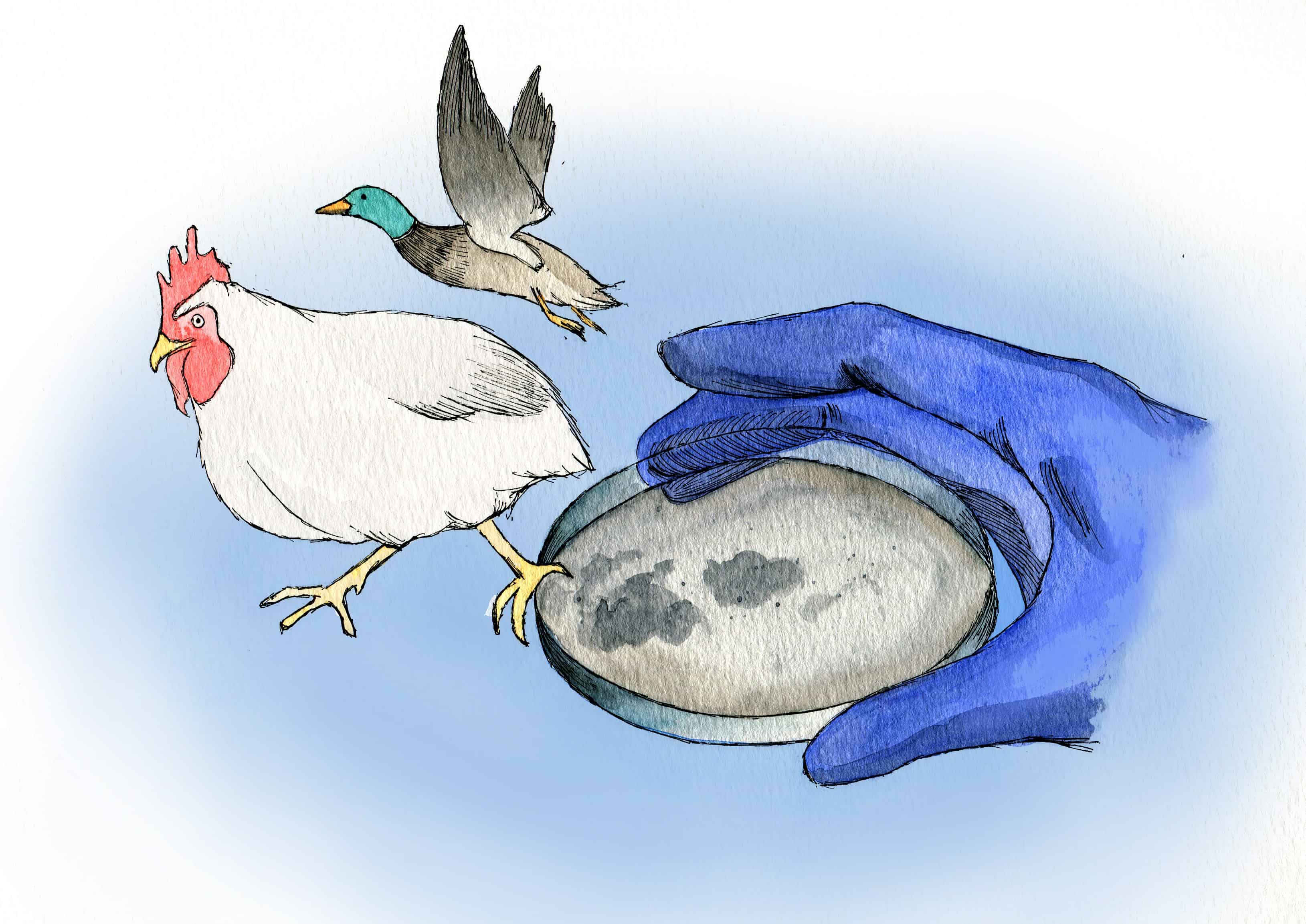It has been suggested that a lethal avian influenza virus H5N1 pandemic is no longer a hypothetical situation but a real threat as a result of mutation. Ron Fouchier and colleagues at Erasmus Medical Center in Rotterdam, the Netherlands, as well as Yoshihiro Kawaoka and colleagues at the University of Wisconsin, Madison, have created a strain of H5N1 capable of spreading between humans as quickly as the seasonal flu.
Fouchier described the process of the research a few months ago at the European Scientific Working group on Influenza (ESWI) meeting in Malta. Just a few mutations made the virus capable of sticking to nasal and trachea cells. This mutant, however, was still unable to pass by air between the lab’s ferrets, a suitable animal model for the study of human flu transmission. To test the possibility further, the scientists then dripped the mutant virus into the nose of one ferret and used some of its nasal fluid to infect another ferret. Before long, the mutant H5N1 was jumping between ferrets as quickly as the seasonal flu.
Some very bad news Fouchier also delivered was that the virus gained five genetic substitutions as it spread between the ferrets, meaning that the virus would be more easily transmissible. The modified H5N1 also would not need to combine with a mammalian virus before becoming easily transmissible to humans. Additionally, the mutations required to make the virus airborne already existed separately in nature but have not yet been found in a single virus particle.
Not surprisingly, there has been a lot of controversy surrounding this research. Some believe that it should have never been conducted in the first place while others believe it is crucial. Dr. Jeff Kwong, assistant professor at U of T’s Dalla Lana School of Public Health, explains that the “benefits [of this research] are that we will hopefully better understand the H5N1 influenza virus — what aspects of it cause virulence, how a vaccine against it might be developed … The risks are that if it got into the wrong hands, a deadly biological weapon could result.” There have indeed been concerns that terrorists may get a hold of the study’s method and use it for bioterrorism.
For now, the moratorium recently placed on this research and its publication has been extended. The World Health Organization believes that this would allow researchers and officials to emphasize the importance of this research and how it was undertaken to better understand the potential for H5N1 to mutate into a variant transmissible among humans through the air. Extending the moratorium would also permit a more thorough investigation of the biosafety and biosecurity issues brought forth by this mutant.
But how long will this moratorium last? “Hard to know,” says Kwong. “There are huge pressures in either direction… It’s going to be very difficult to predict what’s going to happen… I think the moratorium will end if they are able to come to some sort of agreement, but from what I’ve read, the various parties seem to be miles apart in their stances.” It sounds as though we have some waiting to do before we get a glimpse of the results from Fouchier’s group in Science and Kawaoka’s group in Nature.


